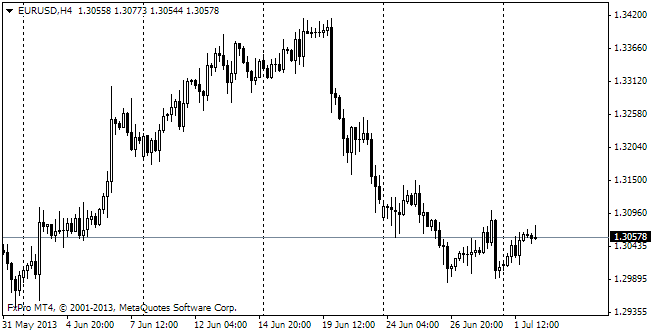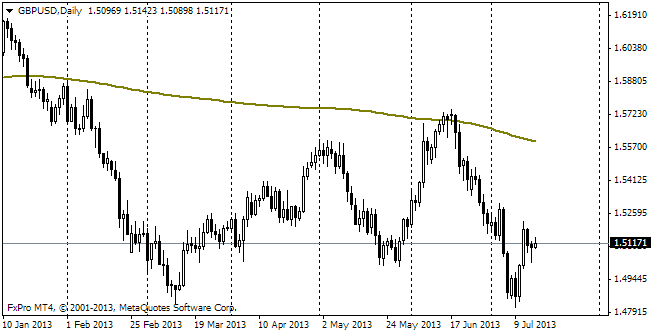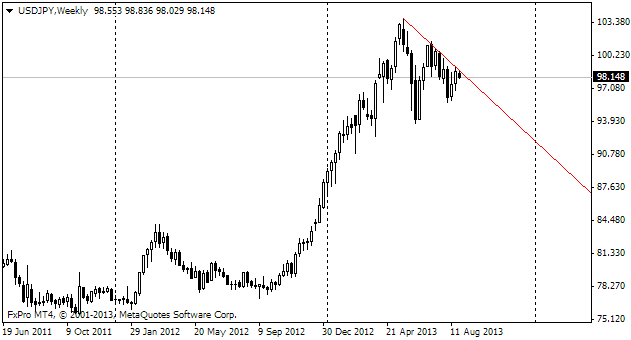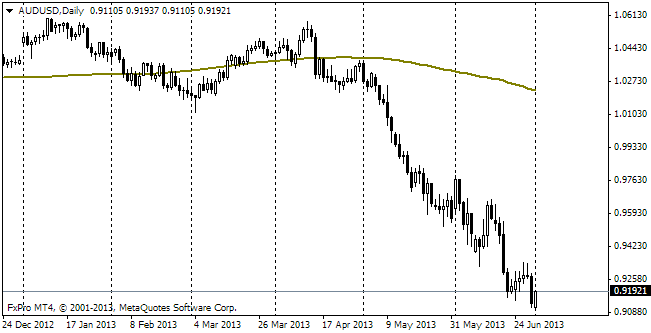EUR/usd
The single currency hit fresh two-year highs against the dollar. Yesterday's high made 1.3824. It is remarkable that the market should be so persistent, purchasing the euro. The thing is that Flash PMIs for France, Germany and the whole eurozone proved to be much worse than expected. Instead of increasing the French manufacturing activity shrank even more, which is reflected in the drop of the index from 49.8 to 49.4 against the expected 50.3. In Germany the situation is a bit better, but the index still failed to meet the expectations. The Manufacturing PMI rose to 51.5 against the forecasted 51.6. Both the countries suffer services sector slowdown. It manifested itself in the drop of the corresponding PMI from 51.0 to 50.2 in France (against the supposed 51.2) and from 53.7 to 52.3 (against the supposed 53.8) in Germany. As we see, the market for no reason is too optimistic about the EU economy. Though Germany's indicators keep pointing out growth, the impulse seems to be less strong than before. And in the coming months it may die out at all as Europe deals poorly with the euro rate above 1.30. In the recent months we've often seen that appreciation of the euro against the dollar (because of Europe or the USA) in a few months eventually has resulted in shrinking of the regional economy. For all that relative stability of the US indicators looks a bit surprising. Trade Balance proved to be better than expected. The trade deficit turned out to be slightly above the expected rate, making 38.8bln in September against 38.6bln a month before and the forecasted extension to 39.4. This improvement in many ways is connected with increase in oil and gas production in the country. Apparently, significant increase still was not achieved. It keeps the States vulnerable to price volatility in the commodity markets and dependent on energy production. Watch US Durable Goods Orders today. They are to show how confident corporations are about economic prospects.

GBP/USD
The sterling has a big day today due to the release of the third-quarter economic statistics for. Economists on average expect growth by 0.8%, which will signal growth strengthening after the increase by 0.7% in the second quarter. In the same way the annual growth rate is gathering pace – it is expected at 1.5%. It is noteworthy that growth is expected not only from the services sector, but also from manufacture. Yesterday's stats on car production impressed many by their growth of 9.9% y/y in September. Of course, in other sectors the situation doesn't look that optimistic. In the end, the long-awaited rebalancing towards manufacture may occur only due to demand growth in Europe.

USD/JPY
Fresh inflation statistics confirmed that price growth in Japan is gathering pace. The annual inflation rate made 1.1% in September. But this can be explained by growth of energy costs. The only thing achieved by the duet of Abe and Kuroda over a year of heavy pressure on the currency is that the CPI Ex-Fresh Food has remained unchanged against the level of the previous year. Yet over that time the currency has depreciated by 25%.

AUD/USD
The Australian currency keeps being under selling pressure, despite the general weakness of the dollar. The pair can't tear itself off 0.9600, depreciating against its other rivals, for instance the yen and the euro, but anyway growing against the New Zealand currency. It is a common thing that the 200-day MA doesn't yield at the first try. We think that now audusd is more likely to go down.
